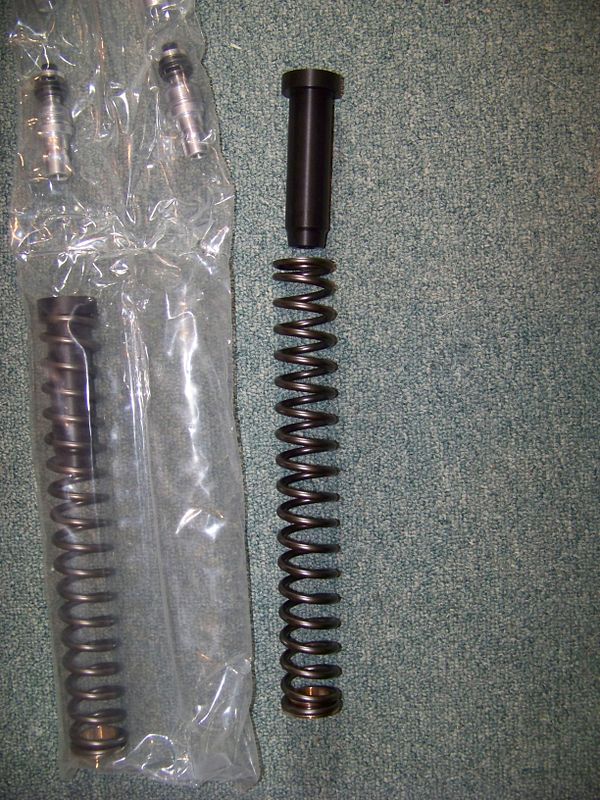https://www.traxxion.com/Fork-Spring-Installation-Instructions/
I dug up the RaceTech instructions for my V-Strom, but those forks don’t have cartridges…….. maybe use Traxxions…..
The Delrin thing is to keep the springs centered so they don’t (a) get off the brass nut/washer on the top of the cartridge (which I think is big enough for the diameter of the springs anyway), (
keep the springs centered inside the tube, can be top or bottom. You put it where you think it will do the most good. Sometimes they give you a flanged washer, which will do the same thing. NOTE, your originals had nothing, and the earlier spring kits had nothing……. They relied on the ID of the tube to keep things in there, and there was a small end to the spring which could never fall off the brass nut/washer on the cartridge….. anyway, just sayin’, whatever looks good to you based on the springs you have. I think RaceTech’s go on the bottom also.
So, assuming it goes on the bottom, Delrin damper inside the spring, temporarily install onto the cartridge. Measure thickness of top washer (OEM) that sits on top of the spring. Extend fork tube, measure top lip of fork tube to top of spring. Deduct thickness of top washer. This is your first number.
On fork cap, back out preload adjuster so the bottom of it is flush with the bottom of the fork cap (if you wind it out all the way, it will be up inside the fork cap somewhat). Measure fork cap, bottom surface to bottom of top flange that becomes the fork tube cap. Subtract this number from the first number. Add 15mm because we want 15mm of preload when you finally assemble the forks (You will have to push down on the fork cap to get it to start threading in…….). Now, your final number is the length of the spacer you need. Mark with a tube cutter, then carefully hack saw it off….. or maybe you can use the tube cutter (I never have). File off any burrs.
Now, test fit. With everything together, top cap screwed on, raise fork tube and there should be a 15mm gap to the bottom of the fork cap or near enough. You can always compensate with a washer if something isn’t quite right, but don’t worry about being perfect to 1 mm or two either…..
If all OK, disassemble, pull spring and leave the delrin thing in the fork (so we don’t have to guess how much volume it takes up). Fill with oil, OEM spec says 98-100 mm below the top of the (
collapsed) fork tube with springs out. Perhaps make that a little more (RaceTech says 110). Just means a little more air cushion, nothing you’ll notice much…… OK, put it all together, you’re done.
On the bike, check your sag, adjust preload to suit….. or, just screw in the preload until 3 bars are showing and go ride. Set rebound to 6-8 clicks out, compression same. Unless you already know what your dialed in previous settings were…… maybe back out one click more since you have better springs now.


































































